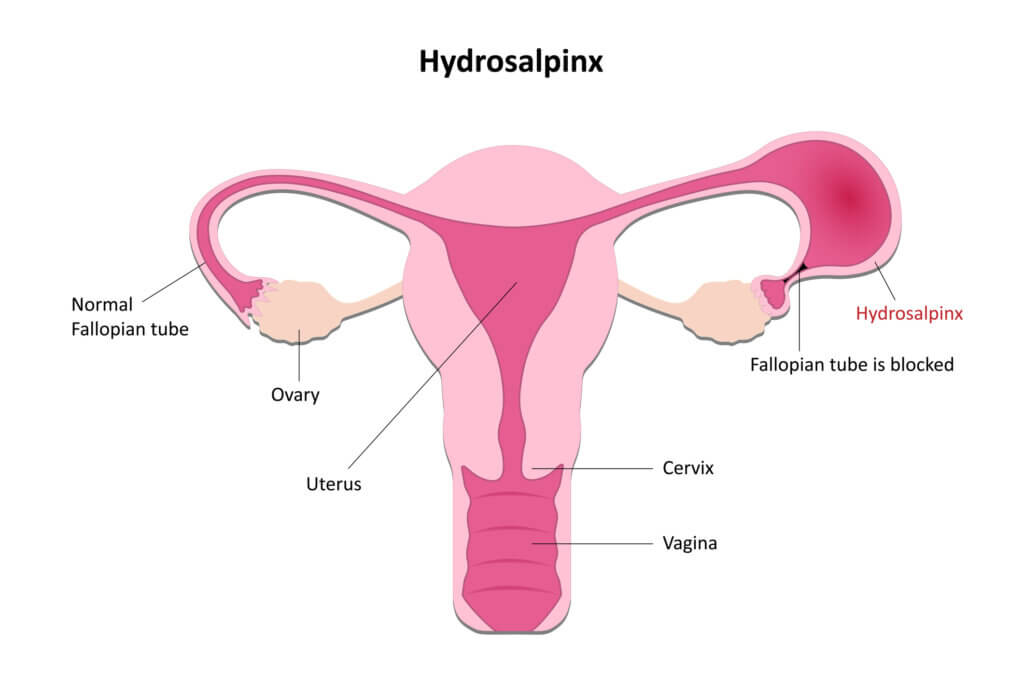A hydrosalpinx can make it difficult to get pregnant

A hydrosalpinx is fluid blockage in your fallopian tubes that may make it difficult for you to become pregnant. A hydrosalpinx most often occurs at the fimbrial end of the fallopian tube where it connects to the ovary.
When the fallopian tube is blocked, the cells inside the tube secrete fluid that can’t escape. This fluid build-up causes the fallopian tube to become enlarged and dilated. When this happens, pregnancy can’t occur since the blockage prevents an ovulated egg from moving from the ovary to the fallopian tube for fertilization by the sperm.
What are the causes and symptoms of hydrosalpinx?
Damage from inflammation and scar tissue to your fallopian tubes, most often from an untreated infection, such as chlamydia, can cause a hydrosalpinx. Other causes include previous surgery (particularly surgeries on the tube), severe adhesions of your pelvis, endometriosis, or other sources of infection such as appendicitis or pelvic inflammatory disease.
Most women do not have any symptoms other than fertility problems. In some women, an ectopic pregnancy may be the first sign of a problem with their tubes. Occasionally, some women may complain of regular or constant pain in their pelvis or lower belly, which may get worse during and after their period. A vaginal discharge can also be associated with this condition.
How is a hydrosalpinx diagnosed?
Our fertility specials have three ways to check if one or both of your tubes are blocked by a hydrosalpinx:
- Hysterosalpingogram (HSG) – This procedure uses dye and an x-ray to visualize where the dye goes after it is inserted into the uterus. If your fallopian tubes are open, the liquid will flow out of the ends of the tube into the pelvic cavity. If the tubes are blocked, the liquid will be trapped and your doctor will be able to tell that you have a hydrosalpinx.
- Ultrasound – Your doctor may be able to detect the presence of a hydrosalpinx on ultrasound. If your tube appears enlarged on ultrasound, this usually indicates a more severe hydrosalpinx.
- Laparoscopic surgery – During a laparoscope, our doctor will make a small opening in your belly and insert a special telescopic camera to look at your uterus and fallopian tubes to see if they are blocked.
Can you still get pregnant with a hydrosalpinx?
If your fallopian tube is completely blocked by a hydrosalpinx, an egg cannot travel through it to your womb. If an ovulated egg is somehow able to connect with a sperm for fertilization, the hydrosalpinx would still likely block the resulting embryo from traveling to the uterus for implantation and pregnancy. It can also potentially cause a dangerous ectopic pregnancy, in which the embryo implants outside the uterus, most often inside the fallopian tube, and results in a life-threatening situation.
If there is too much damage to the tube(s), you will need treatment that does not involve the tubes to help you get pregnant, such as in vitro fertilization (IVF). In this procedure, your egg is fertilized with sperm in the laboratory and then the embryo is placed directly into your uterus.
Your doctor may recommend that your hydrosalpinx is removed or separated from the uterus before you start IVF treatment, as the hydrosalpinx may lower your chance of pregnancy. Surgical removal of a hydrosalpinx is through a procedure called a salpingectomy.
Still have questions? Contact our fertility specialists today to learn more.


